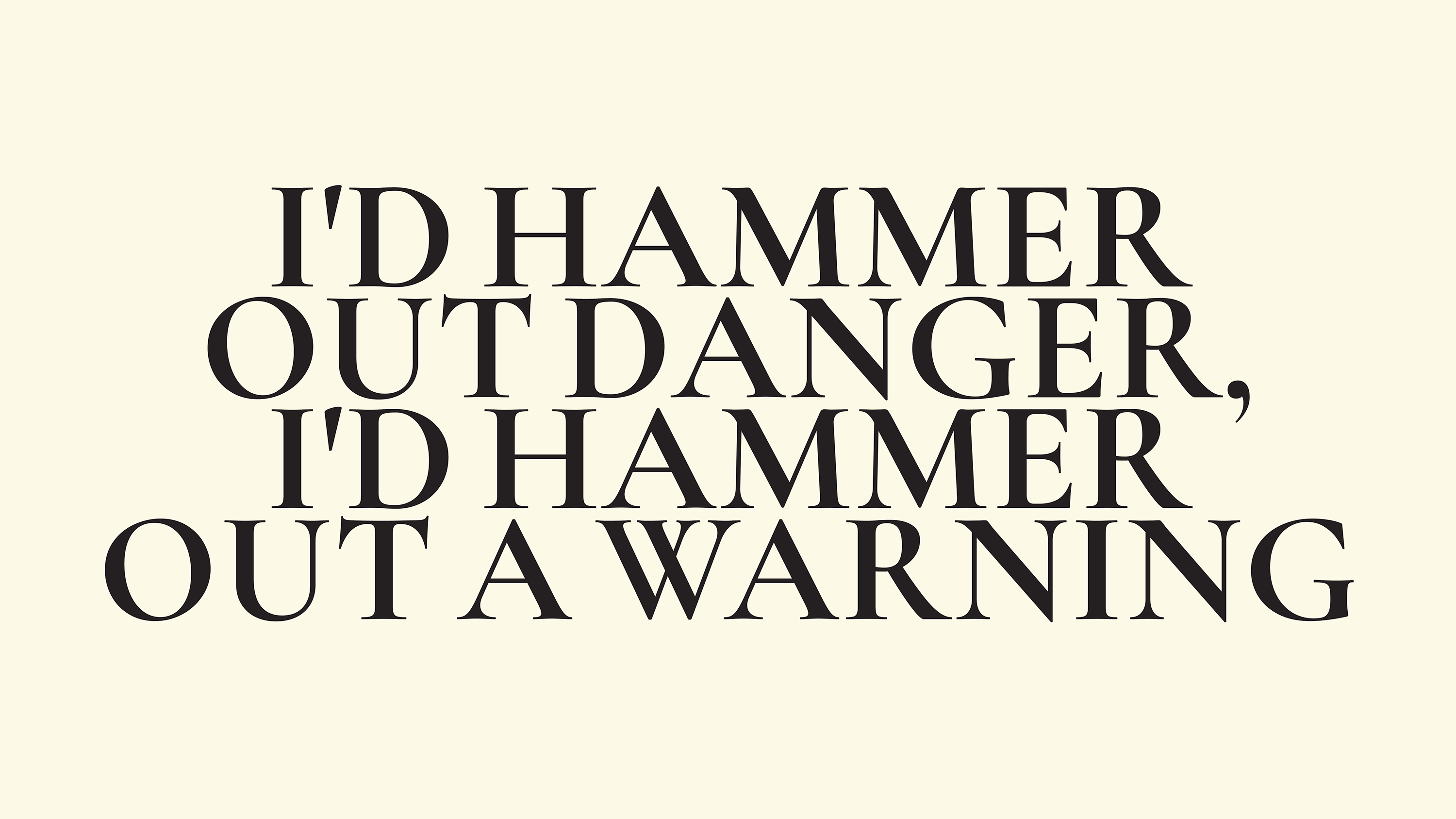
On view: April 8–30, 2022
Silver Street Studios, Room 206
Featuring Tony Cokes, Harun Farocki, Dan Graham, and Rea Tajiri
Curated by Steven Evans, Max Fields, and Amy Sadao
I’d hammer out danger, I’d hammer out a warning is a three-part exhibition presented by FotoFest featuring four films by artists and filmmakers whose work has been inspirational to the conceptual development of the upcoming FotoFest Biennial 2022 exhibition, If I Had a Hammer. Each of the presented films explore, through varied methods and approaches, the ways the circulation of mediated spectacles and images both inform and reflect social movements, political ideologies, and cultural imaginaries.
I’d hammer out danger, I’d hammer out a warning is a three-part exhibition presented by FotoFest featuring four films by artists and filmmakers whose work has been inspirational to the conceptual development of the upcoming FotoFest Biennial 2022 exhibition, If I Had a Hammer. Each of the presented films explore, through varied methods and approaches, the ways the circulation of mediated spectacles and images both inform and reflect social movements, political ideologies, and cultural imaginaries.
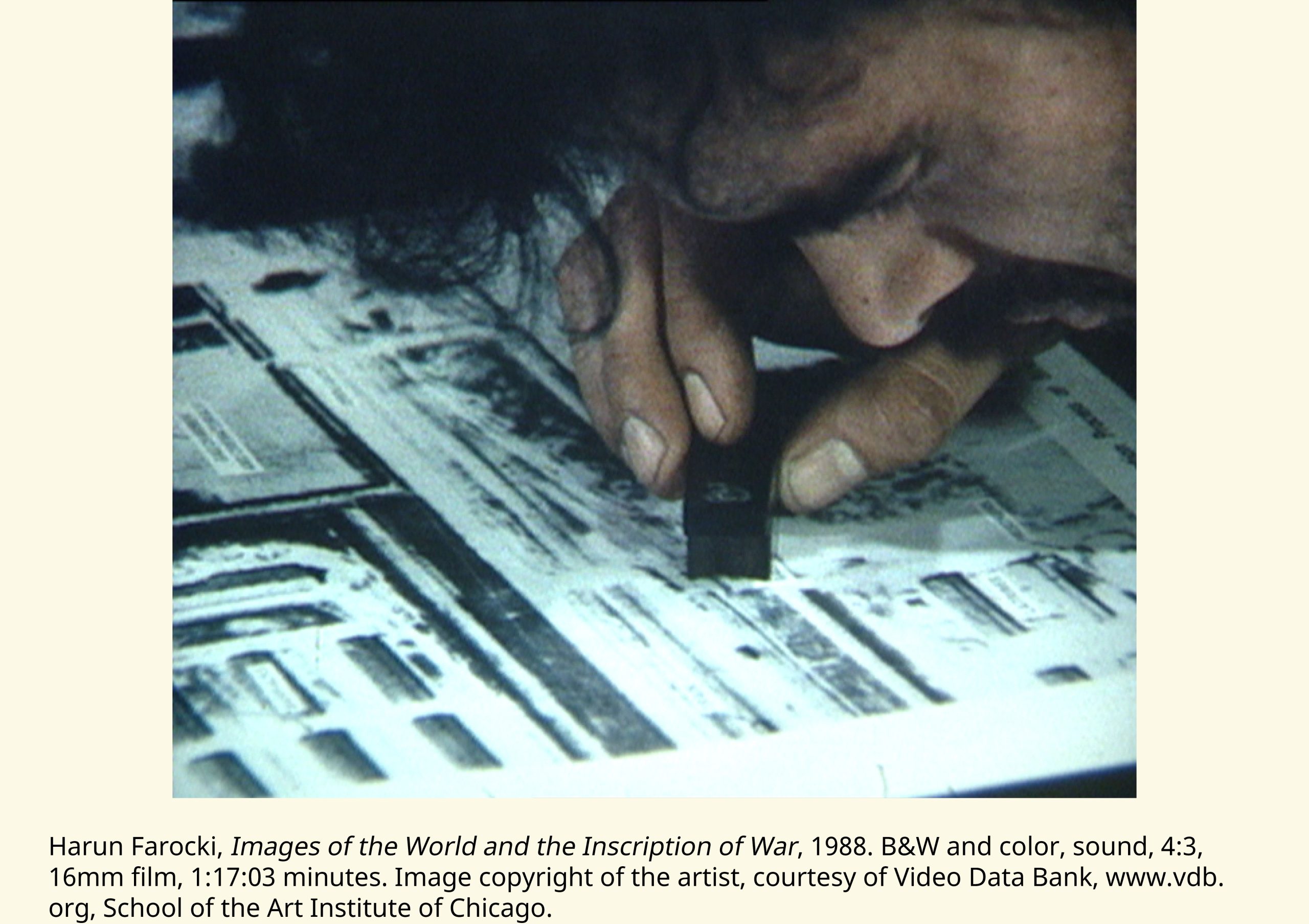

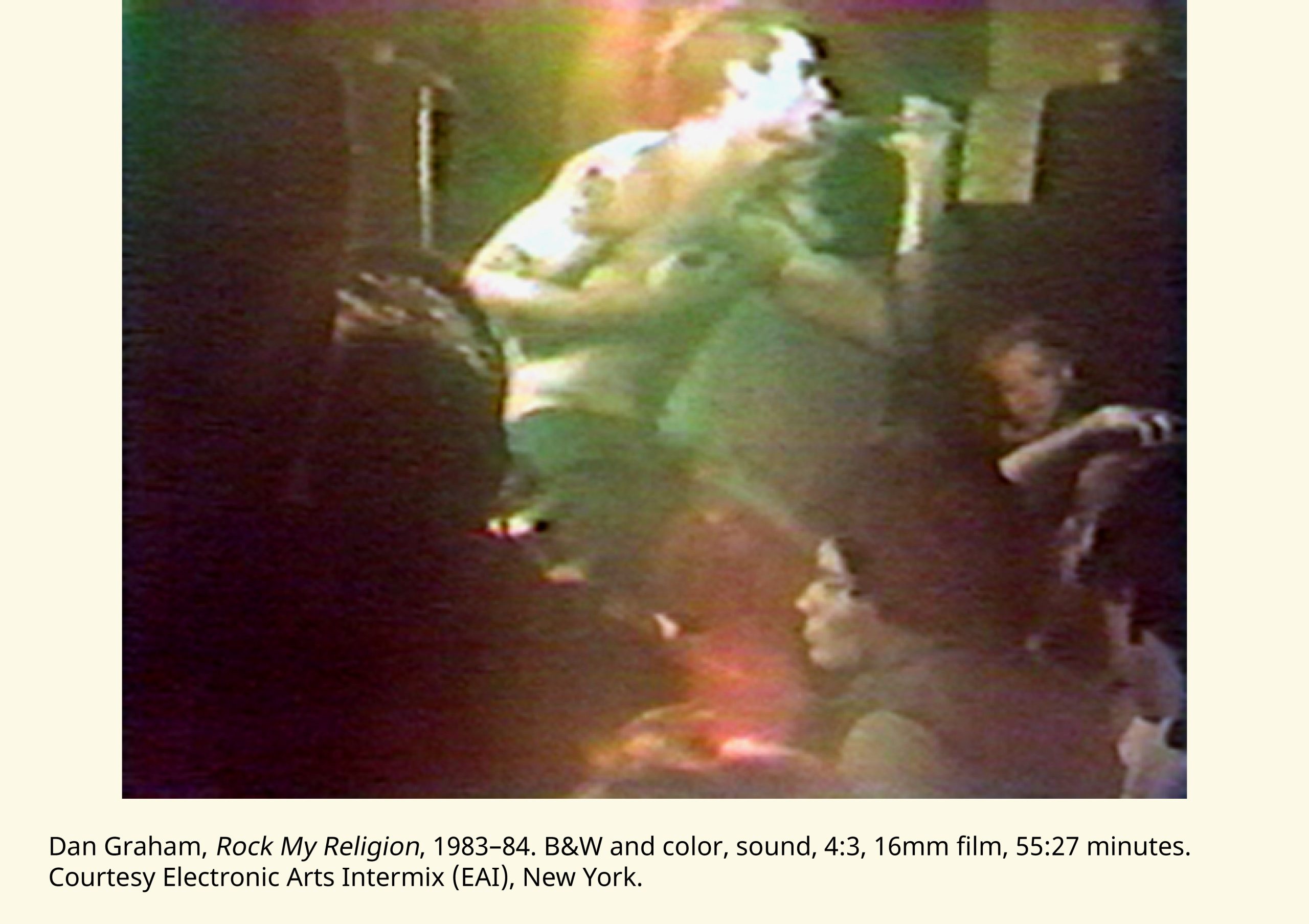
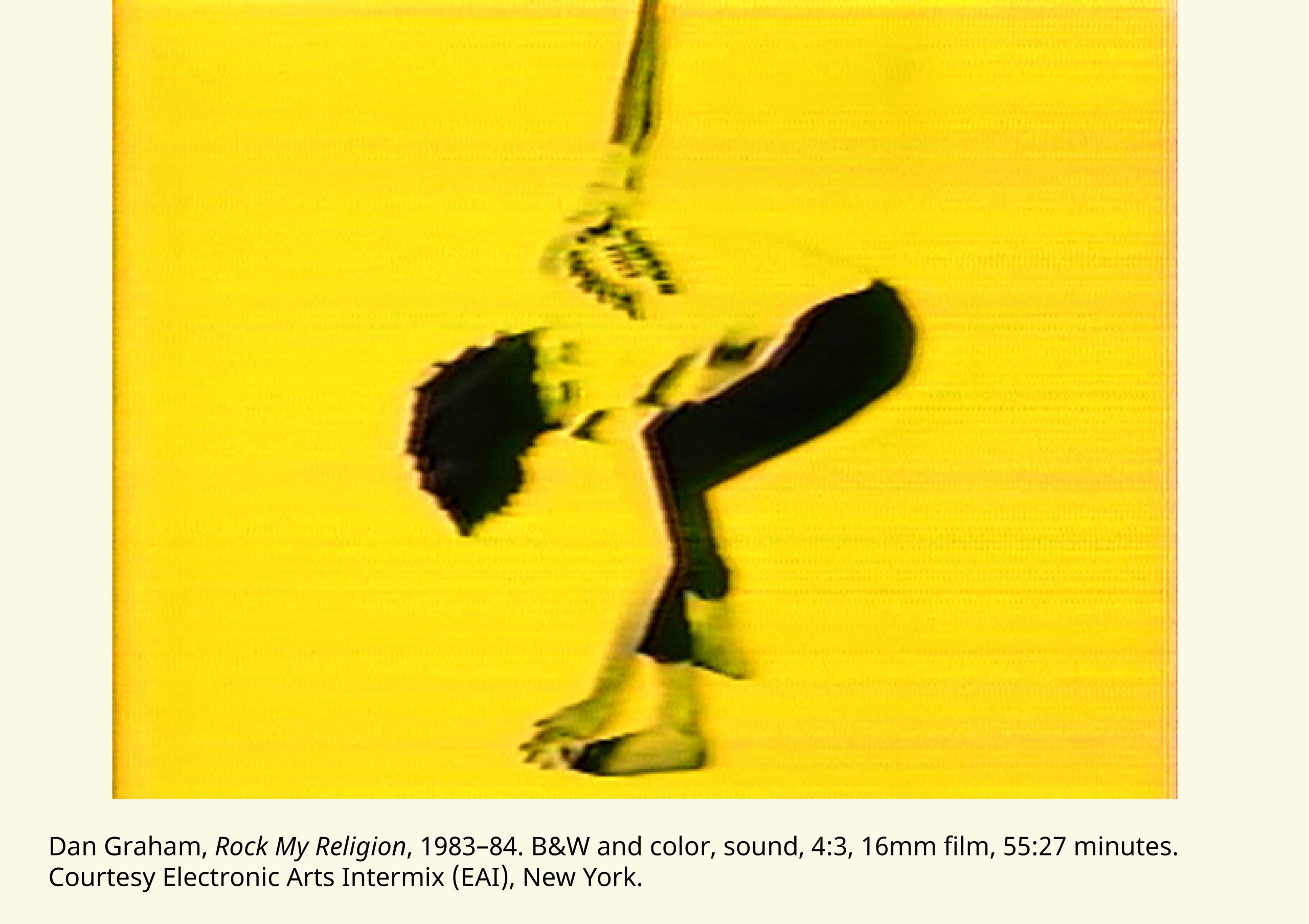

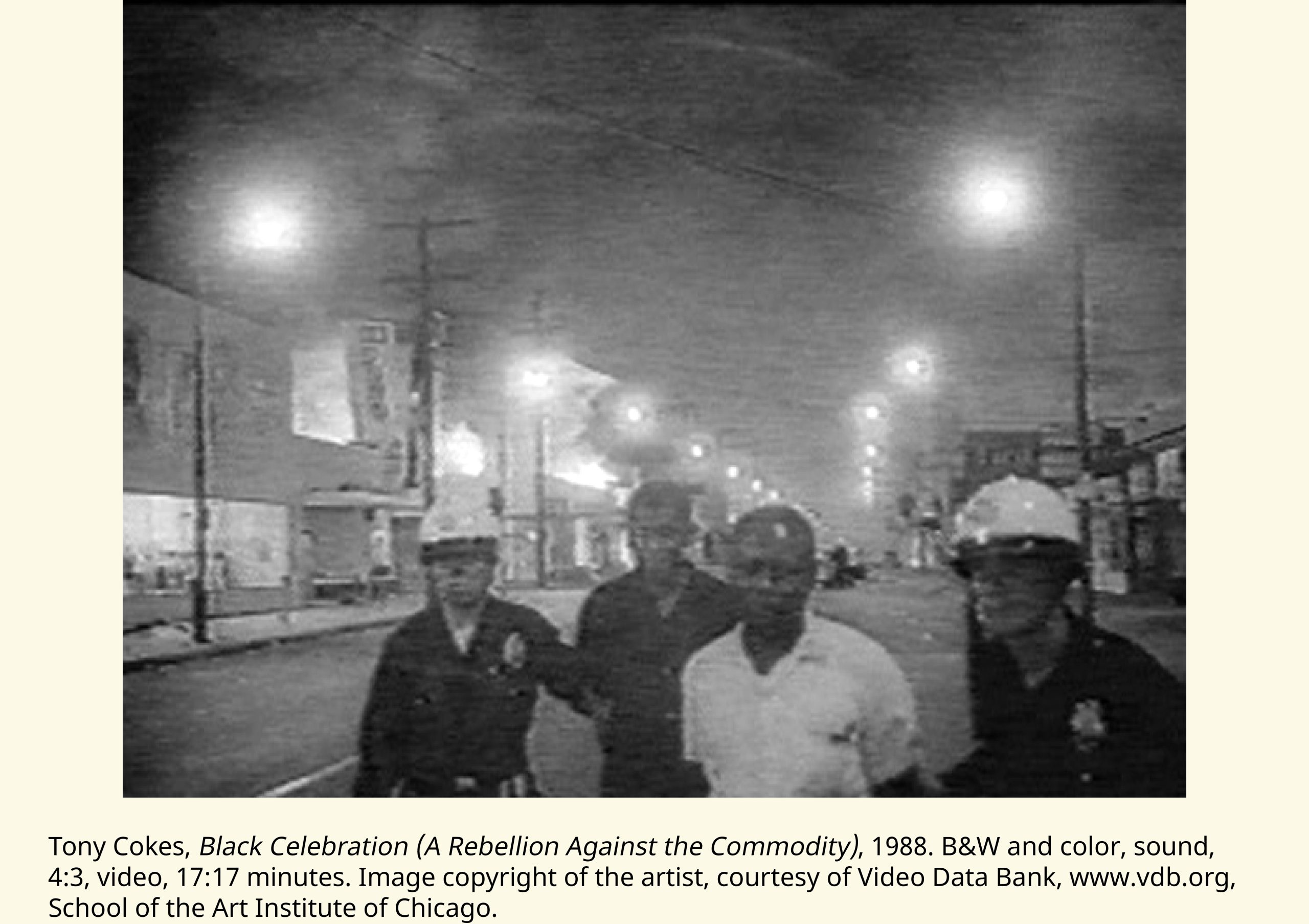

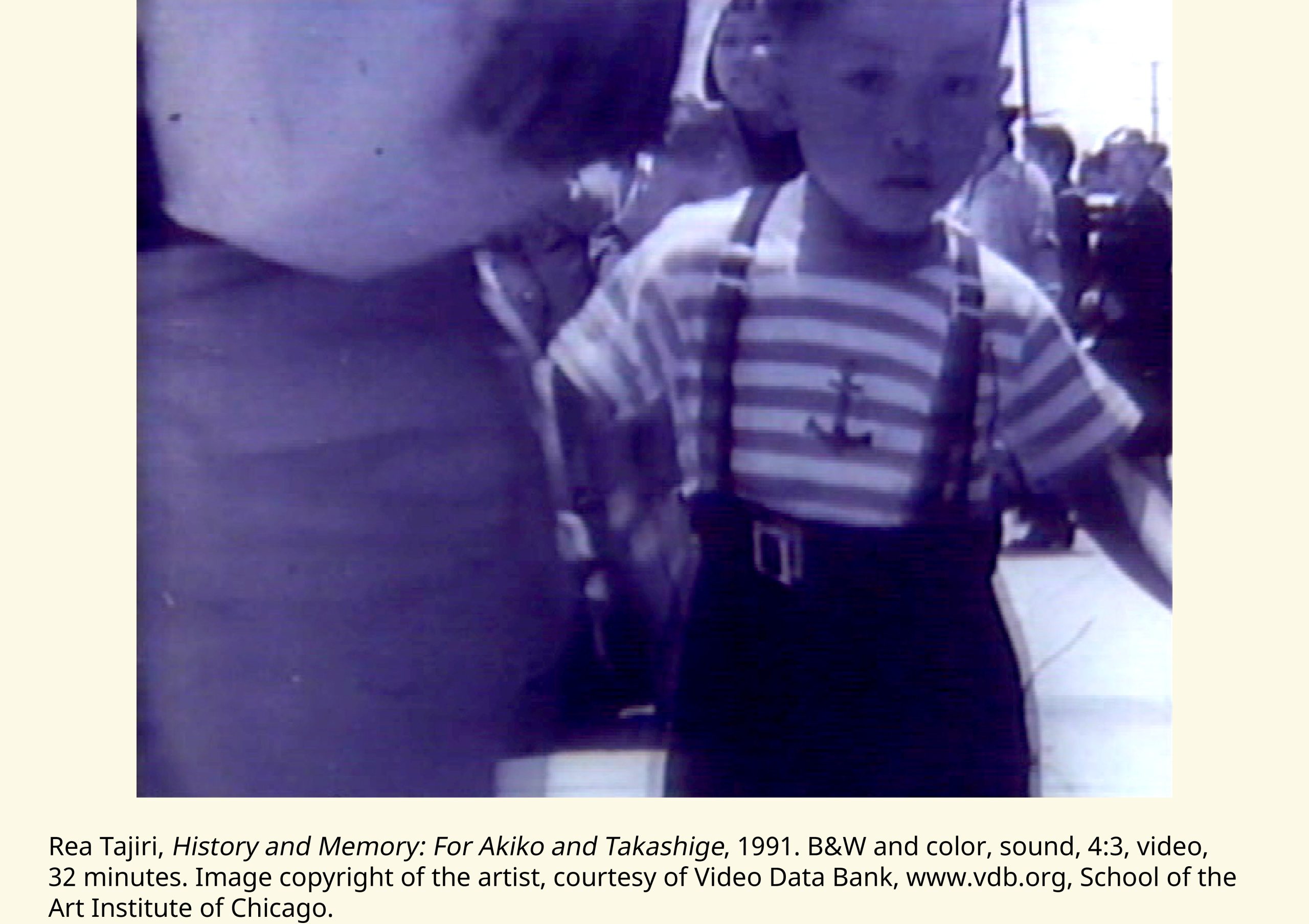
Harun Farocki’s film, Images of the World and the Inscription of War (1988) is a meditation on the relationships between image production, observation, and conscious recognition through the analysis of a series of ariel photographs taken during American reconnaissance missions in WWII Europe. These images are among the first images taken by the allies that prove the existence of the Nazi death camps. But, as Farocki’s film reveals, military photo-analysists did not recognize or notice the camp captured in these images until decades later, in 1977. Farocki uses this example of image capture and analysis as a starting point from which to examine the ways historical context, memory, and perception inform our ability to decode visual information.
Dan Graham’s video essay, Rock My Religion (1983–84) draws on histories of Native American, Shaker, and Puritan religions to propose a relationship between forms of born-again spirituality and the embrace of rock-n-roll as religion in the mid-twentieth century. Weaving together images, text, sound, and video, Graham compares the transcendental performances, embrace of idolatry, and utopian ideals practiced by both religious communities and suburban teens. At the heart of Rock My Religion is an investigation of how ideological codes and historical narratives are transformed by contemporary cultural movements.
Black Celebration (A Rebellion against the Commodity) (1988) by artist Tony Cokes offers an engaged reading of uprisings that occurred in Black neighborhoods in Watts, Boston, Newark, and Detroit in the 1960s. By juxtaposing text from Guy Debord’s “The Decline and Fall of the Spectacle-Commodity Economy,” newsreel footage, and commentary by pop culture icons, Cokes offers a counter-narrative to mainstream discourse surrounding looting, rioting, and acts of communal resistance.
In History and Memory: For Akiko and Takashige (1991), artist Rea Tajiri offers a critique of authoritative and collective historicization by positioning accounts of her family’s experience in Japanese internment camps against Hollywood reenactments, newsreel footage, and government propaganda that reinforce Eurocentric narratives of post-Pearl Harbor America. Tajiri’s film suggests that visual affirmation, provided through the use and circulation of images, is always subjective. She states, “There are things which have happened in the world while there were cameras watching, things we have images for. There are other things which have happened while there were no cameras watching, which we restage in front of cameras to have images of.” History and Memory asks the audience to consider the contexts and conditions within which images are produced, paying special attention to the role of erasure and omission in the formation of historical narratives.
Together, the artists in I’d hammer out danger, I’d hammer out a warning demonstrate techniques of navigating the entanglement of images and ideologies, while underscoring the consequences of critical and cultural intervention on hegemonic systems and structures such as religion, mass-media, and capitalism. The films will be presented at Silver Street Studios in room 206 and will be played on loop, each day, starting at 10AM.
FILM SCHEDULE:
April 8–14, Wednesday–Saturday | 10AM-5PM (starts every hour and a half)
Harun Farocki, Images of the World and the Inscription of War, 1988 | RT: 1:17:03 minutes
April 15–21, Wednesday–Saturday | 10AM-5PM (starts on the hour)
Dan Graham, Rock My Religion, 1983–84 | RT: 55:27 minutes
April 22–30, Wednesday–Saturday | 10AM-5PM (starts on the hour)
Tony Cokes, Black Celebration (A Rebellion against the Commodity), 1988 | RT: 17:17 minutes
Rea Tajiri, History and Memory: For Akiko and Takashige, 1991 | RT: 32 minutes
ABOUT THE ARTISTS:
Tony Cokes (b. 1956) lives and works in Providence, Rhode Island, where he serves as professor in the Department of Modern Culture and Media at Brown University. His work will be included in the Whitney Biennial 2022: Quiet As It's Kept, opening on April 6, 2022, and a solo show will open at Haus der Kunst, Munich in June 2022. Recent solo exhibitions include Memorial Art Gallery, University of Rochester, Rochester (2021); MACRO Contemporary Art Museum, Rome (2021); CIRCA, London (2021); Museu d’Art Contemporani de Barcelona, Barcelona (2020); ARGOS centre for audiovisual arts, Brussels (2020); Carpenter Center for the Visual Arts, Harvard University, Cambridge, Massachusetts (2020); BAK – basis voor actuele kunst, Utrecht, Netherlands (2020); Luma Westbau, Zurich (2019); Goldsmiths Centre for Contemporary Art, London (2019); The Shed, New York (2019); Greene Naftali, New York (2018); Kunsthall Bergen, Norway (2018); and REDCAT, Los Angeles (2012).
His work is in the collections of the Art Institute of Chicago; Carnegie Museum of Art, Pittsburgh; Centre Pompidou, Paris; FRAC Lorraine, Metz; Hammer Museum, Los Angeles; Kunsthallen, Copenhagen; Los Angeles County Museum of Art; The Museum of Modern Art, New York; Queensland Art Gallery, Brisbane; San Francisco Museum of Modern Art; The Studio Museum in Harlem, New York; Wexner Center for the Visual Arts, Columbus; and the Whitney Museum of American Art, New York, among others.
Harun Farocki (b. 1944, d. 2014) lived and worked in Berlin. Recent solo exhibitions include Kemper Art Museum, Washington University in St. Louis (2021); Art Encounters Foundation Timișoara, Romania (2020); Instituto Moreira Salles, Rio de Janeiro and Sao Paulo (2019); National Museum of Modern Contemporary Art, Seoul (2018); Neuer Berliner Kunstverein, Berlin (2017); Arsenal — Institut für Film und Videokunst e.V., Berlin (2017); Harun Farocki Institut, Berlin (2017); Savvy Contemporary, Berlin (2017); Tàpies Foundation, Barcelona (2016); Whitechapel Gallery, London (2016); CAPC musée d’art contemporain, Bordeaux (2015); Haus der Kulturen der Welt, Berlin (2015); Center for Contemporary Art FUTURA, Prague (2015); Museum für Gegenwart, Hamburger Bahnhof, Berlin (2014); Greene Naftali, New York (2014); Museum Folkwang, Essen (2014); Museo Universitario Arte Contemporáneo, Centro de Cultura Digital, Mexico City (2014); Moderna Museet, Stockholm (2013); ARGOS Center for Art and Media, Brussels (2013); Tel Aviv Museum of Art, Tel Aviv (2013); Museum of Fine Arts, Houston (2012); The Museum of Modern Art, New York (2011); Center for Contemporary Arts, Glasgow (2011); and Tate Modern, London (2009).
His work is in the collections of the Neuer Berliner Kunstverein (n.b.k.), Berlin; Austrian Cultural Forum, Vienna; Hamburger Bahnhof – Museum für Gegenwartskunst, Berlin; Goetz Collection, Munich; Hamburger Kunsthalle, Hamburg; Hessel Museum of Art, Annandale-on-Hudson, New York; The Museum of Modern Art, New York; The National Gallery, London; Staatliche Museen zu Berlin; Tate Modern, London; Technisches Museum Wien (Vienna Technical Museum), Vienna; and ZKM | Center for Art and Media, Karlsruhe.
Dan Graham (b. 1942, d. 2022) was an American artist and curator best known for his integral role in beginnings of Conceptual Art during the 1960s. Incorporating writing, photography, and performance, Graham employs the aesthetics of music magazines, suburban houses, corporate offices, and malls, as a means to introduce subversive ideas into people’s daily lives. “Homes for America was done intuitively, but I was also interested in the relationship between serial music and Minimal Art. At the time, Esquire magazine was publishing sociological exposes like David Riesman’s, “The Lonely Crowd.” They used photographers in the school of Walker Evans, photographers who were showing vernacular workers’ housing, suburban housing, but usually from a humanistic negative viewpoint,” he explained of his work. “I wanted to keep all of those meanings but empty out the pejorative expressionistic meanings. On the other hand, I didn’t want to go as far as minimal. I wanted to show that minimal was related to a real social situation that could be documented.” Born on March 31, 1942 in Urbana, Illinois, he was raised in New Jersey, though he never attended college he educated himself in anthropology, French literature, and other subjects. His time as a music critic for magazines, especially rock music, led Graham to produce works that embody a spirit of rebellion. He later worked as the director of the briefly existent gallery, John Daniels Gallery, where he put on Sol LeWitt’s first solo show as well as shows of Robert Smithson, Dan Flavin, and Donald Judd. Today, his works are held in the collections of the Art Institute of Chicago, The Museum of Modern Art in New York, the Tate Gallery in London, the Los Angeles County Museum of Art, and the Walker Art Center in Minneapolis, among others. Graham passed away on Saturday, February 19, 2022 at age 79 in New York.
Rea Tajiri (b. 1958) is a filmmaker and visual artist who was born in Chicago, Illinois. She earned her BFA and MFA degree from the California Institute of the Arts in post-studio art. Her ground-breaking, award-winning film, digital video and installation work, has been supported by numerous grants, fellowships, and artistic residencies, has been exhibited widely in museums, on television, and in international film festivals. Poetic, subtly layered and politically engaged, her work advances the exploration of forgotten histories, multi-generational memory, landscape and the Japanese American experience. Her experimental documentary History and Memory: For Akiko and Takashige, and feature film Strawberry Fields have influenced a generation of filmmakers, leading to their inclusion in Asian American, Cinema Studies, Women’s and Gender Studies curricula in the US. Her recent multi-site installation project Wataridori-birds of Passage (2018) mapped and enlivened forgotten traces of local Japanese American history linked in a series of locations around the city. Her feature documentary Lordville (2014) probed the material and immaterial traces of an upstate New York town’s history. Her current documentary-in-progress is Wisdom Gone Wild. The film chronicles her sixteen-year journey of elder care for her mother who had dementia, and illuminates their lifelong passion for the arts and the language of the elders.
As an advocate of emerging artists and directors, Rea co-founded The Workshop, an incubator for Asian American film directors in New York City. She has taught extensively throughout the US. as a visiting professor and artist-in-residence. Currently, she is an Associate Professor in the Film Media Arts Department at Temple University where she teaches documentary production.
SPONSORS:
FotoFest Major Institutional and Individual Support
The Brown Foundation, Inc., Houston Endowment, National Endowment for the Arts, Texas Commission on the Arts, City of Houston through the Houston Arts Alliance, The Phillip and Edith Leonian Foundation, The Powell Foundation, The Wortham Foundation, The Susan Vaughn Foundation, WWW Foundation, Robert Rauschenberg Foundation, Judith and Gamble Baldwin, Wendy Watriss and Frederick Baldwin, Rose Ann Medlin and William E. Joor III, Travis Capps, Carola Herrin, Katy and Michael A. Casey, The FotoFest Board of Directors, Silver Street Studios, and iLand Cloud Services.
Support of the FotoFest Annual Fund is provided by Julie and Drew Alexander, Chinhui and Eddie Allen, Mary Axelrad, Kath Blanco, Mary Kay Casey, Anne Chao, Malcolm Daniel, Patricia Eifel, Ursula Felmet, Cece and Mack Fowler, Eve France, Kenneth Frederick, Rashed Haq, David Ivie, Wendy and Mavis Kelsey, David Kerr, Frasier King, Barbara and Geoffrey Koslov, Sandy Jo Lloyd, James E. Maloney, Joan Morgenstern, Christopher Rauschenberg, Mary Sanger, Carey Shuart, Jamey Stillings, Julie Smythe, Sandra Tirey, Eliane Thweatt, Robert Westendarp, Sharon and Del Zogg, Erla and Harry Zuber and many other generous donors.
The FotoFest Mobile App is supported by Ken Anderson, Frederick Baldwin and Wendy Watriss, Kath Blanco, Thomas Damsgaard, Masud Haq, Carola Herrin, Bill Joor, Abigail Owen-Pontez, Greg Spier and Phuong Tranvan.
FOTOFEST
© 2023 FotoFest
STAY CONNECTED

